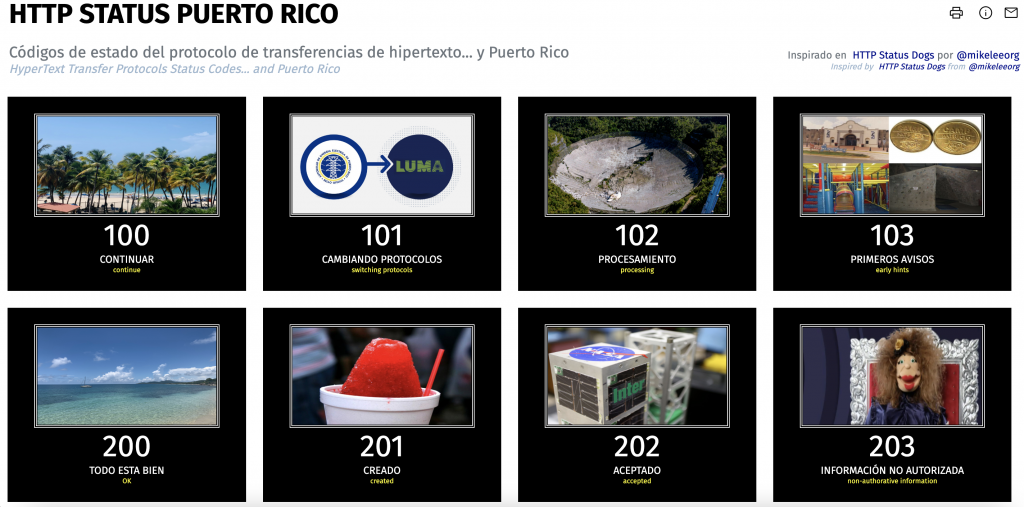
HTTP Status Puerto Rico project references Puerto Rico’s popular culture to illustrate HTTP (Hypertext Transfer Protocols) status codes’ definitions. With a sense of humor, it shows web development concepts you encounter most days if you are a cybernaut.

Made with vanilla HTML (Hypertext Markup Language), CSS (Cascade Style Sheet), and Javascript. Why use HTML, CSS, and Javascript for this project? I have been working with frameworks based on HTML, CSS, and Javascript for a long time. So, I needed to practice those languages in their basic form. You can read the project’s code here.
I intend to create explanatory videos covering the code written for the HTTP Status Puerto Rico project. The videos’ target audience would be people who have theoretical knowledge in HTML, CSS, and Javascript but do not know how to apply that knowledge yet. I have not started the video stage of the project till the date of publication of this writing. But if you want to receive notifications about these videos or new blog posts, you can register below.
What are HTTP status codes?
HTTP status codes are notes the server sends to the browser. These notes communicate the browser’s status request. Messages like “server error” or “page do not exist” after entering a link in the browser are a server’s response to your link request as an HTTP status code message.
Each status code consists of three digits. The first digit identifies the status code’s class. While the second and third digits identify the specific status code.
There are five HTTP status code classes:
- 100 – 199: Informative status code suggests that the initiated request is still in process.
- 200 – 299: Success status code response received by the client means that the server received, understood, and processed the browser’s request.
- 300 – 399: Redirect status code informs that the requested resource was substituted with a new resource.
- 400 – 499: Client-side status code error informs that there is a problem with the browser’s request.
- 500 – 599: Server-side status code error means that due to a server error, the browser’s request was accepted by the server but not completed.
Do not forget to visit HTTP Status Code Puerto Rico for an HTTP status code list.
Related articles
The following articles are somehow related to the post you just read. You should check them out!
- HTML for Beginners
- HTML Tag Attributes
- HTML Tag Nesting
- What is the Rendering Engine?
- Resources for Newbie Web Coders
- Programming Language: The General Parts
- Learn to Code
By the way – A Playlist for you
I wrote this article listening to something dear to my heart because I recorded it. This progressive and melodic house mix is one of my first recorded and shared through social media. So, I hope you enjoy it.